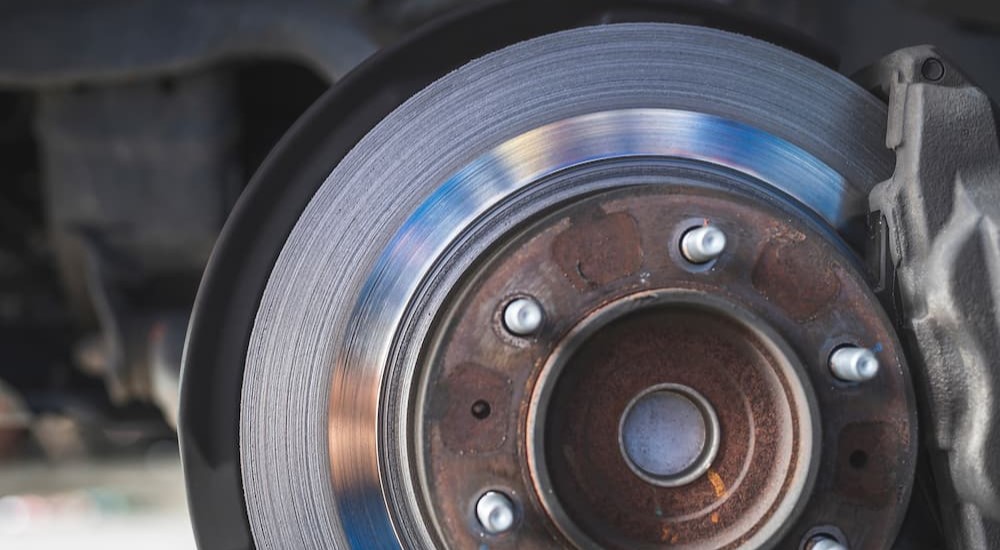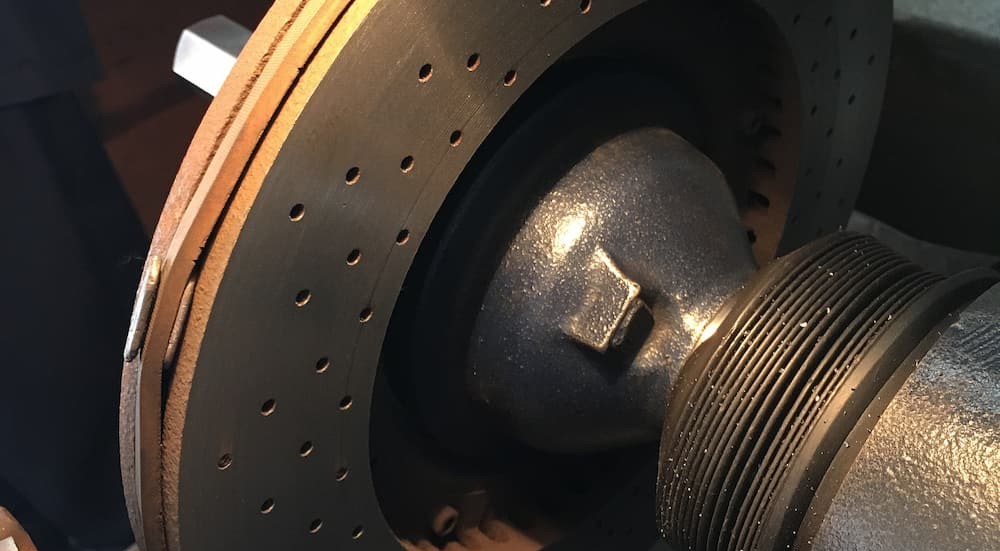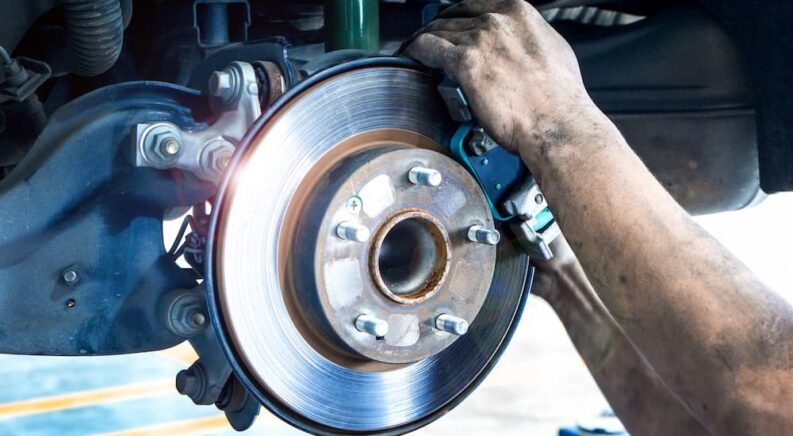There are plenty of reasons why you might need to visit your local Ford or Toyota service center. Some are no cause for concern, like coming in for a regularly scheduled oil change or tire rotation, but when you’re having issues (especially issues with your braking system), things can get a little scarier—and a little pricier, too.
When you hear that you’re having a problem with your brakes, it can be easy to get worried. It can also be difficult to make good decisions if you aren’t well informed. On the one hand, you definitely don’t want to cut any corners regarding the well-being of something as important as your car’s brakes, since the stakes can literally be life and death; however, you don’t want to get ripped off or overcharged, either. So how do you avoid both extremes while getting the service that you need?
In this guide, we will look at a common issue with brakes: a warped rotor. We’ll get into what a rotor is and how you might be able to tell that you’re having an issue with it. We’ll also look at two common ways of dealing with a warped rotor: resurfacing it, and replacing it altogether. By the end of this article, you should have all the information you need to hold your own in a conversation with your automotive technician. That way, you can eat your cake and have it, too: keep your vehicle safe and roadworthy without spending an arm and a leg on unnecessary expenses.

What’s a Brake Rotor?
Modern disc brake systems can get complicated, incorporating high-tech elements like wheel speed sensors, electronic control units, or automatic emergency braking utility. But on a basic level, when you hit the brake pedal, you activate the calipers, which clamp down on discs known as rotors, using the brake pads to squeeze the spinning rotor and bring it to a halt. Since this process involves so much friction, it’s no wonder that brake pads must often be replaced due to wear and tear.
Rotors are made of much stronger material than brake pads, so they don’t wear down as quickly, but that doesn’t mean that they last forever. If they heat up too much, they can get worn down unevenly and warp, which is when you have to decide whether to get them resurfaced or replaced. You should address this issue as soon as you notice it, since patterns of uneven overheating can eventually alter the molecular structure of the rotor’s material and, if this process goes too far, the rotor will need to be replaced, even if it hasn’t worn down to the wear limit.

Rotor Resurfacing
If you have a warped rotor, then the first thing you or your technician should do is check to see if it can be resurfaced. Resurfacing is generally the first choice and should be a sufficient response in many cases. Basically, this process takes the unevenly worn rotor and evens it out by machining it down further, resulting in a fresh, smooth surface that will help your brakes function normally.
Of course, a rotor can’t be resurfaced indefinitely. There will eventually come a point when the resurfacing process wouldn’t leave a thick enough piece of metal behind. This limit is generally stamped right onto the rotor, which helps take guesswork out of the process. How many times a rotor can be resurfaced varies not only from part to part but from driver to driver, as the severity of the warp can bring down the number of times a particular part can safely be resurfaced. Generally speaking, a rotor can be resurfaced around two to five times before it needs to be replaced altogether.
Rotor Replacement
Replacing a rotor is just what it sounds like: you remove the old part and replace it with a new one. As you might imagine, this is generally more expensive than getting a rotor resurfaced. Like rotor resurfacing, it’s a process that requires specialized labor, but on top of that, you also have to pay the cost of getting a whole new part. This means that, if you have a choice between resurfacing and replacing, getting your rotor resurfaced is the more affordable option; however, if your rotor has been worn down past the recommended wear limit, then replacing it becomes your only safe option.
When your rotors are replaced, you should always get your brake pads replaced as well. When you pair the rough surface of used brake pads with the smooth surface of a new rotor, your brakes can get noisy or even overheat. On the other hand, it’s fine to install new brake pads with old rotors that have been resurfaced, since the resurfacing process makes the rotors smooth and ready to pair with a fresh set of brake pads.

How Do I Know If I Need Brake Service?
Many modern vehicles have indicators that let you know when brake pads need to be replaced or when a more serious issue with the braking system is detected. But even if you have a system like this, you should never ignore the physical signs that something may be wrong with your brakes. If you have an older vehicle that doesn’t have these indicators, then you should be extra aware of the tactile symptoms of brake troubles.
The most common sign that your rotors may be warped is a slight pulsation that you feel when applying the brakes, especially when braking while going downhill. This feeling should be localized to the pedal, however. If you sense a larger vibration—one that you can feel in the steering wheel or the dashboard—then you’re probably dealing with a different issue, but you should absolutely still get your brakes checked out. If you have any issues or notice differences in the way that your brakes work, it never hurts to get them inspected by a professional.
Pump the Brakes: Some Final Thoughts
When driving at high speeds on freeways, being able to rely on your brakes is crucial. If you have any issue with your brakes—whether it’s a shudder you can feel or just a strange sound you hear every time you come to a stop—you should always take action right away. If it’s an issue with your rotors, don’t hesitate to get them resurfaced or replaced.
Resurfacing is the less expensive choice, and it is perfectly safe as long as it is done without going past the manufacturer’s wear limit. If you’ve never had your rotors resurfaced before, and a technician is trying to push replacement on you, ask a few follow-up questions before you agree; your persistence might just save you some money. You can even ask them to show you the limit printed on the rotor, so you can see the situation for yourself. However, at a certain point, replacement really is the only option; in that case, it’s absolutely worth paying the extra money to keep your car safe and sound.
Like any automotive repair, brake rotor resurfacing or replacement is best done by a trusted professional. Braking systems are vital, and resurfacing is something that needs to be done with precision—so even if you’re pretty handy with the tool kit, you should avoid doing a DIY repair on your rotors. And, when replacing them, it’s best to stick to OEM parts that you can rely on to fit your system perfectly and last for the long haul.

